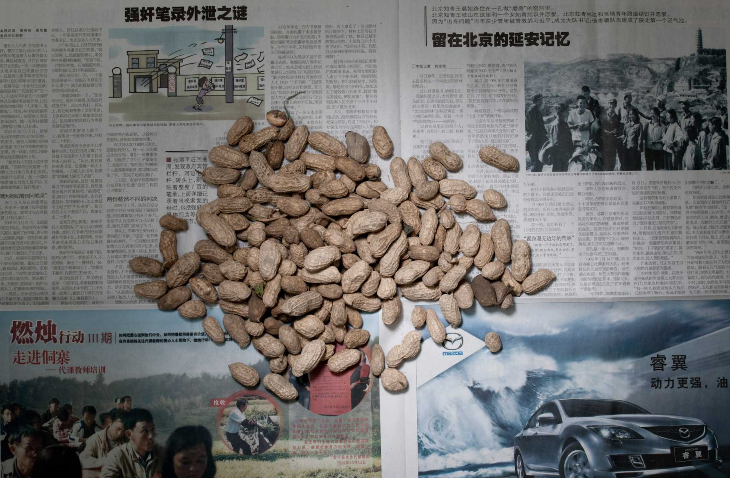
Stefen Chow, The Poverty Line
Earlier this week, I tweeted about Stefen Chow's The Poverty Line, a collection of photographs that documents what an individual can buy with a daily wage of 3.28 yuan (49 cents), and here I want to draw more attention to this project and another like it. In documenting the choices one might face with this daily wage (significantly below the World Bank's poverty line, $1.25/day), Chow dramatizes the plight of the poor while staying within the language of economics and exchange.
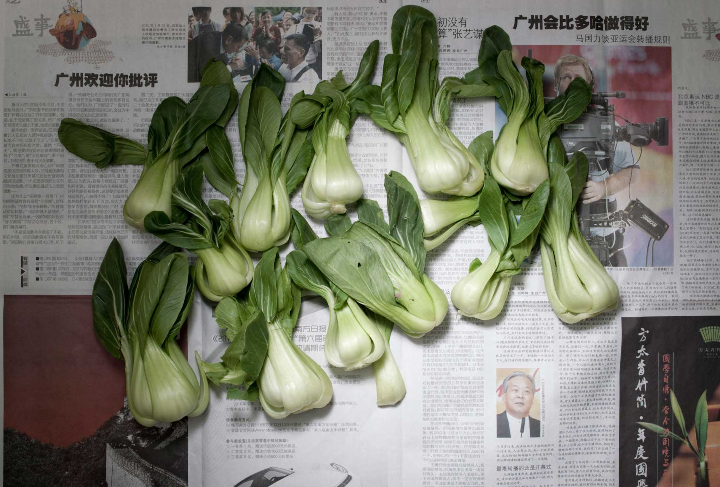
Chow's photos are less sentimental than many documentary projects that focus on poverty; there are no crying children or hardened, starving adults. By constructing the viewer as the person confronted with this meager harvest, however, these photos do ask that we consider the daily frustration of making life or death decisions about how to handle limited resources. By making the limits of these funds visible, Chow also makes them real for viewers who might not be able to conceive of what living on 49 cents a day in China would look like.
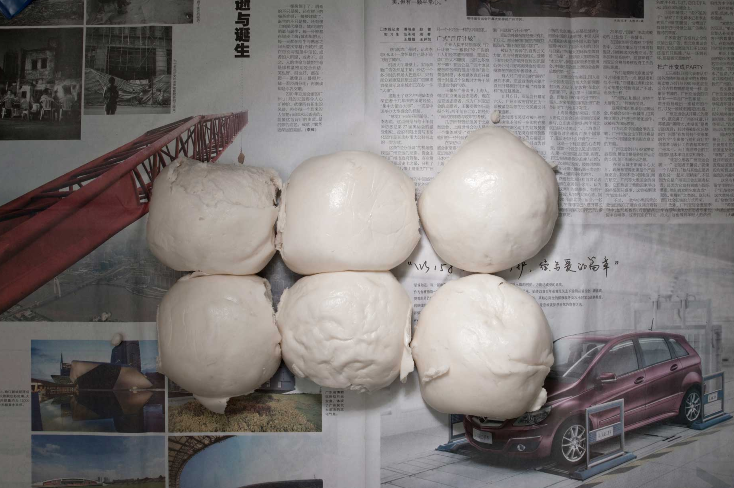
A similar project by Jonathan Blaustein has a different origin and different rhetorical effects. The Lens blog on the New York Times website reports that Blaustein's The Value of a Dollar began when he realized that both the single and the double cheeseburger cost a dollar at his local fast food joint. The resulting project is a meditation on food as a commodity with a constructed value. The quantities represented are about what you would expect; Blaustein was able to purchase very few organic, early season blueberries and a lot of potted meat, ramen, and white bread, thereby supporting the thesis that it is often cheaper to buy processed food (although, notably, he was able to get a lot of grapefruit).
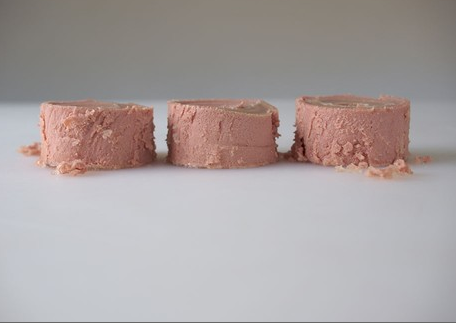
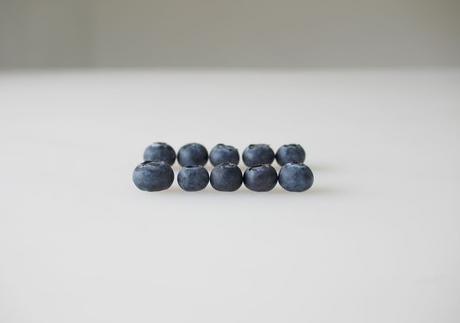
Jonathan Blaustein, The Value of a Dollar
Perhaps most interesting about this project is the composition; the photos set up the food items without packaging and isolated, with a white background, as if presenting them as art objects. Here, Blaustein's project differs most noticeably from Chow's. Where Chow places food on a newspaper and the viewer above, emphasizing the quotidian nature of this dilemma and allowing for easy comparisons between one food item and another, Blaustein plays with scale, sometimes making it difficult to ascertain how much of, for example, a Burger King side salad one can buy for a dollar.
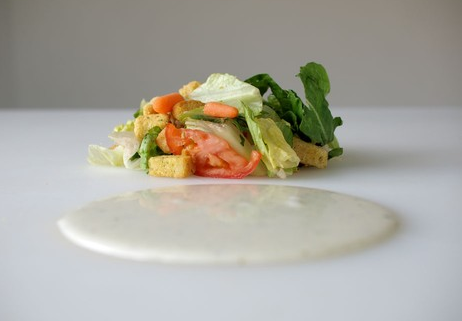
While both artists ask their viewers to consider food as a commodity, their requests take strikingly different forms. In a pedagogical context, these images might be useful for discussing visual rhetoric and illustrating the argumentative different that subtle changes can make.
Comments
Foreign Food
It's particularly interesting to me that Chow's site doesn't include labels for the foods he photographs. Combined with Chinese newspaper as a backdrop, the food, therefore, looks particularly foreign. I'm not familiar with that green vegetable, and I have no idea what the round white items are. This has the effect of making the images look all the more bleak as I would have no clue how to prepare the food items.
Representative foods
I do have to agree that bok choy is great. And steamed buns were sort of my guess--when naming the image, I put "rolls," which isn't quite right, but they look awfully big for dumplings. Also, Cate, I think your observations are interesting because I was struck by the fact that some of the foods that Blaustein photographed were foreign to me; for example, he includes an image of pork floss, which I had never heard of and had to look up. I was also surprised initially at the diversity in the food he photographed; I expected The Value of a Dollar to be focused on the horrible junk you can get for a dollar, or a strict polarization (a lot of processed, inexpensive food versus very small amounts of organic, unprocessed food), but there was somewhat of a range. In addition to the very expensive (saffron, blueberries) he includes items that are still prohibitively expensive for many consumers, but not as many. He also notes where he purchased these items; the basmati rice from Whole Foods would likely be less expensive at many Indian groceries.
Bok Choy and Dumplings
You're really missing out if you don't know about bok choy. The white balls are, I'm pretty sure, dumplings.
or steamed buns (char siu
or steamed buns (char siu bao)...